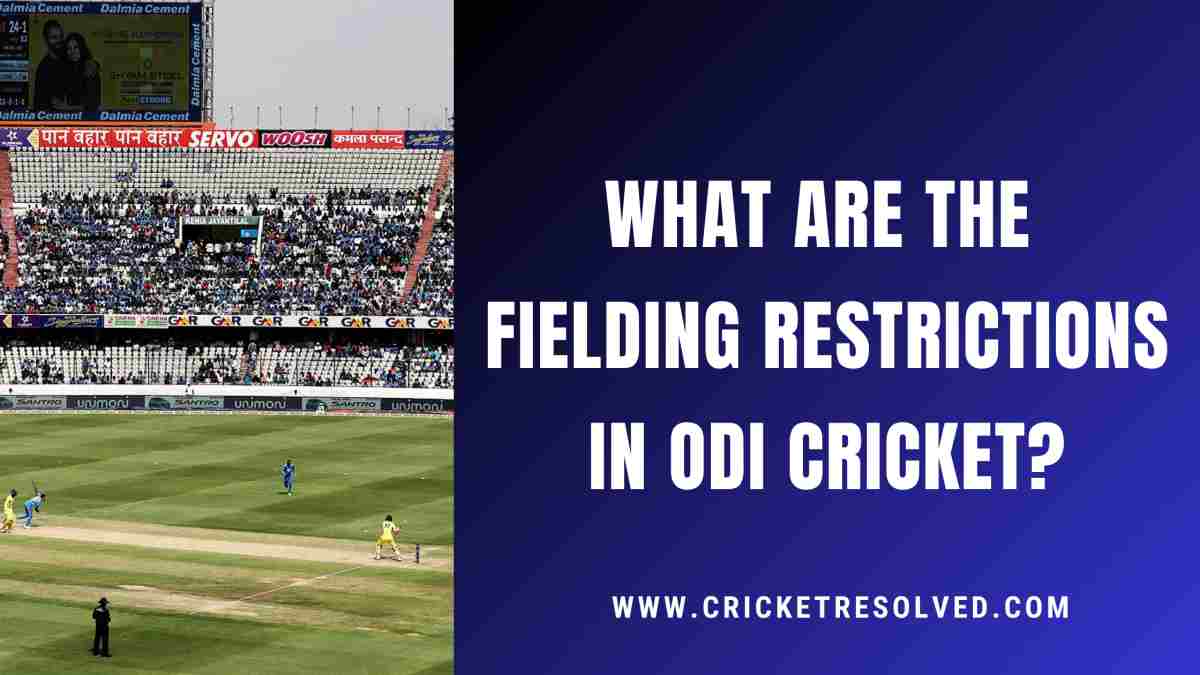
In the early 1970s, fans were introduced to a new cricket format — One Day International (ODI). Since then, the format has undergone many changes to strike a cord between bat and ball.
Similarly, cricket’s governing body, the ICC, has made changes to fielding restriction rules in ODIs. So what are the fielding restrictions in the ODI format?
Let’s understand the fielding restrictions imposed in ODI cricket.
Fielding Restrictions in First Powerplay (1-10 Overs)
As you know, an ODI game consists of 50 overs, divided into 3 powerplays. The first powerplay comes into play from the 1st over to the 10th over.
During the first powerplay, the fielding team is only allowed to place 2 fielders outside the 30-yard circle. This is similar to the restrictions put in place in T20 matches.
In this phase, you will see the batters trying to smash boundaries on the loose deliveries to give a solid start to their team.
Fielding Restrictions in Second Powerplay (11-40 Overs)
The middle overs from 11 to 40 are part of the second powerplay in ODIs. During this phase, the fielding team is permitted to field a maximum of 4 fielders outside the circle.
Now, the fielding team can put a break on the ball racing towards the boundary, with the fielders placed on the boundary line. Moreover, they will also look to grab wickets by putting pressure on the batters by placing fielders in the right positions.
Fielding Restrictions in Third Powerplay (41-50 Overs)
Now, coming to the last 10 overs, the fielding team can place a maximum of 5 fielders outside the 30-yard circle. Since batters look to score as many runs as possible, this field relaxation allows teams to stop the boundaries.
Fielding Restriction for Slow Over Rate in ODIs
As you know, an ODI inning takes almost 3.5 hours to complete, and the bowling team needs to bowl the 50 overs within the allotted time. If the team fails to complete the inning by the scheduled time, they will be allowed to field only 4 fielders instead of 5.
What Happens if the Fielding Restrictions are not Followed?
If the fielding team doesn’t adhere to the fielding restrictions, then the on-field umpires will signal a no-ball. The fielding team will be penalised if the fielders are not in their designated places when the bowler releases the ball.








